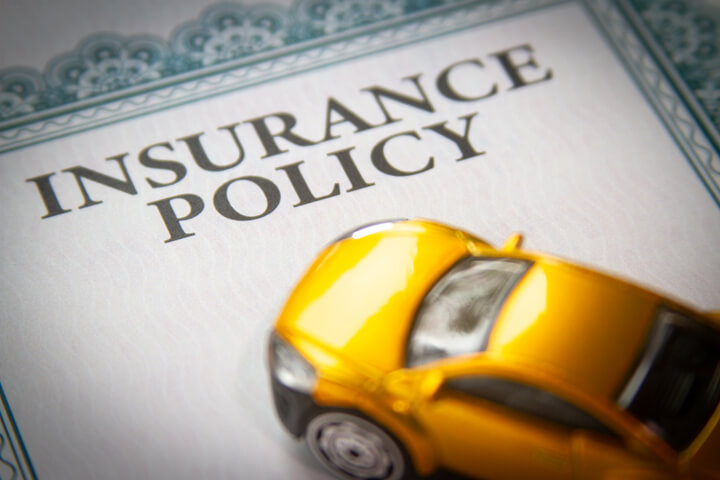Many people use ride-sharing services like Uber as a convenient and cost-effective way to get around. However, some may wonder if using Uber could potentially impact their car insurance rates. The answer is not straightforward and depends on several factors.
When a driver signs up to become an Uber driver, they are required to have their own personal car insurance policy. Uber also provides additional insurance coverage for its drivers while they are on the job.
Insurance coverage offered by ride-sharing companies is limited to specific phases of the ride, such as when the driver has accepted a ride request or is actively transporting a passenger.
Nonetheless, during other phases of the ride, such as before the driver accepts a ride request or after the passenger has been dropped off, the driver’s personal insurance policy is liable for any accidents or damages that may occur.
Table of Contents
Understanding Uber and Auto Insurance
When it comes to Uber and auto insurance, it is important to understand how the two interact. Uber provides insurance coverage for its drivers, but this coverage is not always sufficient. In addition, using your personal vehicle for ridesharing purposes can affect your personal auto insurance policy.
Uber offers insurance coverage to its drivers while they are working. However, this coverage is dependent on the driver having their own personal auto insurance policy. Uber’s insurance coverage is divided into three periods, each with different levels of coverage.
- In the initial period, when the driver is waiting for a ride request, Uber provides liability coverage of up to $50,000 per person and $100,000 per accident. This coverage is in addition to the driver’s personal auto insurance policy.
- Once the driver has accepted a ride request and is on their way to pick up the passenger, the second period commences. During this period, Uber provides liability coverage of up to $1 million for accidents involving the driver and/or passenger. This coverage also includes uninsured/underinsured motorist bodily injury coverage.
- The third period commences when the passenger is in the car and the driver is en route to the destination. During this phase, Uber offers the same liability coverage of up to $1 million, along with contingent comprehensive and collision coverage for any physical damage to the driver’s vehicle.
It is crucial to note that Uber’s insurance coverage applies only when the driver is using the Uber app and working actively. When the driver is not using the app or is using their vehicle for personal use, their personal auto insurance policy is responsible for any accidents or damages.
In addition, using your personal vehicle for ridesharing purposes can have an impact on your personal auto insurance policy.This is because certain insurance companies may consider ridesharing as a commercial activity and, as a result, exclude coverage for accidents that happen while the driver is using their car for ridesharing purposes.
To ensure that you are fully protected while using your vehicle for ridesharing, it is important to check with your insurance company. This will help you determine whether your current policy covers ridesharing or if you need to purchase additional coverage.
How Uber’s Insurance Works
Coverage During App Off
When a driver is not using the Uber app, their personal auto insurance policy is their sole source of coverage. During this time, Uber’s insurance coverage does not apply.
Coverage During App On, No Passenger
When a driver is logged into the Uber app but has not yet accepted a ride request, they are covered by Uber’s contingent liability insurance. This insurance policy provides coverage of up to $50,000 per person for bodily injury, $100,000 per accident for bodily injury, and $25,000 per accident for property damage.
Coverage During Trip
If a driver has accepted a ride request and is waiting for the passenger, they are covered by Uber’s contingent comprehensive and collision insurance. This insurance policy provides coverage for physical damage to the driver’s vehicle, up to the actual cash value of the car, with a deductible of $1,000.
Coverage During App On, Waiting for Passenger
If a driver has accepted a ride request and is waiting for the passenger, they are covered by Uber’s contingent comprehensive and collision insurance. This insurance policy provides coverage for physical damage to the driver’s vehicle, up to the actual cash value of the car, with a deductible of $1,000.
It’s important to note that these coverages are subject to certain conditions and exclusions, and may vary depending on the state and country where the driver is located. Additionally, drivers may still be responsible for their own medical bills and lost wages if they are injured in an accident while driving for Uber.
Factors Influencing Insurance Rate Increase
There are several factors that can influence whether an Uber driver’s insurance rate will increase. Some of the most common factors include:
1. Type of Insurance Policy
The type of insurance policy that an Uber driver has can greatly affect their insurance rate. Drivers who have a commercial auto insurance policy will typically pay more than those who have a personal auto insurance policy. This is because commercial policies provide more coverage and protection for the driver, passengers, and other individuals involved in an accident.
2. Driving Record
A driver’s driving record is another important factor that can influence their insurance rate. Drivers who have a history of accidents, traffic violations, or other incidents on their record will typically pay more for insurance than those with a clean driving record. This is because insurance companies view these drivers as being more of a risk to insure.
3. Location
The location where an Uber driver operates can also impact their insurance rate. Drivers who operate in areas with high traffic congestion, crime rates, or other risk factors may pay more for insurance than those who operate in safer areas. This is because insurance companies view these drivers as being at a higher risk of being involved in an accident or other incident.
4. Vehicle Type
The type of vehicle that an Uber driver uses can also affect their insurance rate. Drivers who use luxury or high-performance vehicles will typically pay more for insurance than those who use more standard vehicles. This is because these vehicles are more expensive to repair or replace in the event of an accident.
Overall, there are several factors that can influence whether an Uber driver’s insurance rate will increase. By understanding these factors, drivers can take steps to minimize their risk and keep their insurance rates as low as possible.
Impact of Driving for Uber on Personal Auto Insurance
Policy Cancellation Risk
Driving for Uber can increase the risk of policy cancellation by the insurance company. Personal auto insurance policies generally do not provide coverage for commercial activities, such as driving for hire. If the insurance company discovers that the policyholder is driving for Uber and has not disclosed it, they may cancel the policy.
Furthermore, if a policyholder discloses their Uber driving, the insurance company may decide to cancel their policy or require them to purchase a commercial auto insurance policy, which is usually more expensive than personal auto insurance.
Gap in Coverage
One of the challenges that arises when driving for Uber is a potential gap in insurance coverage. Although Uber provides insurance coverage for its drivers, it only applies during specific periods.
The ride is divided into three phases: when the driver is online and waiting for a ride request, when the driver has accepted a ride request and is en route to pick up the passenger or has the passenger in the car, and when the passenger is in the car, and the driver is traveling to the destination.
While Uber provides limited liability coverage during the first phase, it does not cover collision or comprehensive damage to the driver’s vehicle. However, during the second and third phases, Uber provides liability coverage, as well as collision and comprehensive coverage for the driver’s vehicle.
Despite this, there may still be a gap in coverage between the driver’s personal auto insurance policy and Uber’s insurance coverage. This gap could leave the driver liable for damages in the event of an accident.
Therefore, it is crucial for drivers to comprehend their personal auto insurance policy and Uber’s insurance coverage to ensure sufficient protection while driving for Uber. By doing so, drivers can prevent potential gaps in coverage and safeguard themselves from financial loss in the event of an accident.
Ways to Protect Yourself as an Uber Driver
Rideshare Insurance
As an Uber driver, it is important to protect yourself and your passengers from any potential accidents that may occur on the road. One way to do this is by obtaining rideshare insurance. Rideshare insurance is specifically designed for drivers who work for ridesharing companies like Uber.
Rideshare insurance provides additional coverage that is not typically included in personal auto insurance policies. This coverage includes liability, collision, and comprehensive coverage while you are driving for Uber. Without rideshare insurance, you may be left with gaps in coverage that could result in significant financial loss in the event of an accident.
Commercial Auto Insurance
Another way to protect yourself as an Uber driver is by obtaining commercial auto insurance. Commercial auto insurance is designed for businesses that use vehicles for work purposes. This type of insurance provides coverage for accidents, theft, and other incidents that may occur while you are driving for Uber.
Compared to personal auto insurance policies, commercial auto insurance offers more comprehensive coverage. It can cover bodily injury, property damage, and medical expenses for both the driver and passengers. It is essential to keep in mind that personal auto insurance policies usually do not provide coverage for accidents that occur while working for Uber.
Additional Tips
In addition to obtaining rideshare and commercial auto insurance, there are other ways to protect yourself as an Uber driver. Here are a few additional tips:
- Keep your vehicle well-maintained to reduce the risk of accidents.
- Be sure to follow all traffic laws and regulations while driving for Uber.
- Avoid distracted driving, such as using your phone or eating while driving.
- Consider installing a dashcam in your vehicle to record any incidents that may occur while driving for Uber.
By following these tips and obtaining the appropriate insurance coverage, you can protect yourself and your passengers as an Uber driver.
Conclusion
In conclusion, it is important for Uber drivers to understand how their insurance coverage works. While Uber provides some insurance coverage for its drivers, it may not cover all damages or injuries that occur while driving for Uber.
If an accident occurs while driving for Uber, it is important for drivers to notify their personal insurance company as well as Uber’s insurance company. Failure to do so could result in denied claims or increased insurance rates.
It is also important for drivers to consider purchasing additional insurance coverage, such as commercial auto insurance, to ensure they are fully protected while driving for Uber.
Overall, while using Uber as a driver may impact insurance rates, it is not a guarantee that rates will increase. It ultimately depends on the driver’s personal insurance policy and the specifics of the accident or incident.







